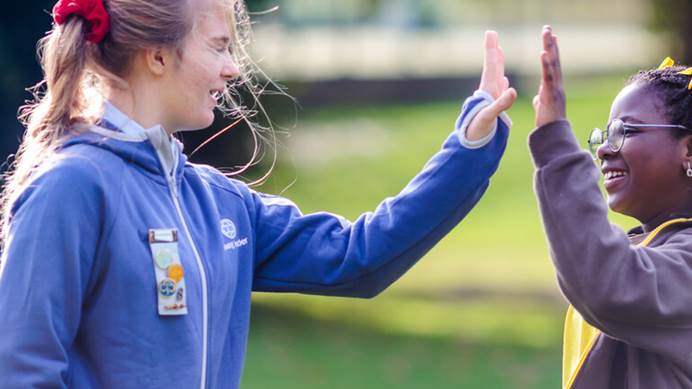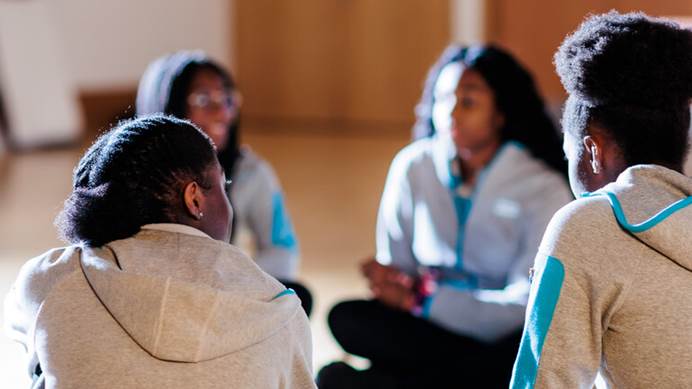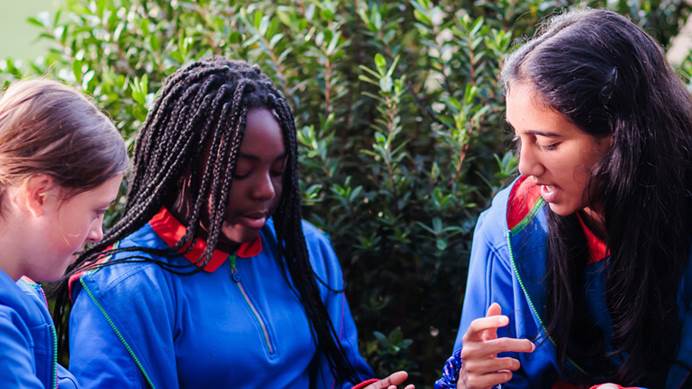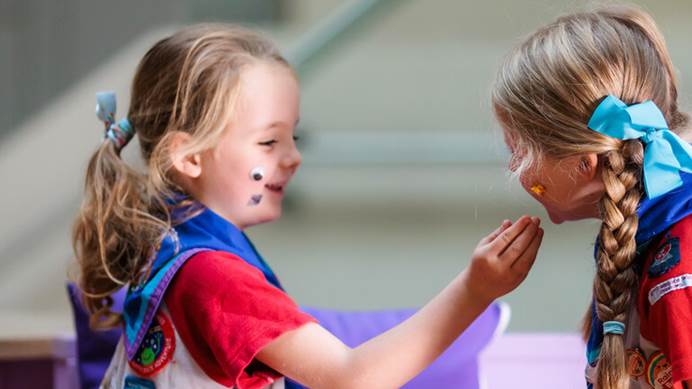Using images and video
Are you taking photos or creating videos? Read our guidelines
Images and videos are an important part of our brand.
They help us to connect with our audience and show what it’s like to be part of Girlguiding. They help to reinforce our brand purpose that girls can do anything.
Our photography principles
At Girlguiding:
- We use reportage photography, so all our images are an authentic and natural depiction of a scene. They should feel colourful and bright as we’re a vibrant youth brand.
- We photograph girls and volunteers at their level, so we can engage with them and see the different emotions on their face.
- We have a focal point in our images that catches the viewers’ attention, with clean, uncluttered backgrounds.
- We don’t show girls on their own, there’s always someone else in the picture.
- We want everyone to be able to see themselves as part of Girlguiding, so it’s important we represent the diversity of our membership. across our photography.
Read our brand guidelines for more information on our photography styles and principles.
Taking photos
If you're taking photos yourself, it's important to make sure your images follow our photography styles and principles. If you’re briefing a photographer, share the photography pages of the brand guidelines with them so they understand how to capture our brand.
Image format
Images should always be provided for print at 300dpi. When commissioning new images, consider the format (landscape or portrait) of the image and its end use.
Permissions and usage
When photographing children and young people under the age of 18, you need to get written consent from their parent or carer. Ask the girls as well for their permission when taking photos of them.
Make sure to follow our digital safeguarding policy when sharing images online.
When commissioning photography, please ensure that you negotiate as broad a usage right with the photographer as possible.
And finally, consider:
- Where am I using the image?
- What is the most appropriate format (landscape or portrait) for the image’s end use?
- How long do I want to use the image for and have I negotiated the appropriate usage right with the photographer?
- Have I acquired written permissions from the parents or carers of the girls?
Choosing images
When choosing images, think about what will help you to communicate your message clearly. Here are some prompts to help you pick the best photos:
- Do the images help show the message or story your trying to communicate?
- Do you have a range of images that reflect our photography styles and build a story?
- Do the images reflect our photography principles?
- Do they feel authentic and natural?
- Are they bright and colourful?
- Is there a focal point that captures your attention?
- Do the girls feel part of a group?
- Can we see and engage with the emotion on their faces?
- Do the images reflect the diversity of our membership?
- Photos of girls looking directly to the camera should be used sparingly as they don’t feel as natural or authentic.
Shooting video
We want all of our media to reflect the fun girls have when guiding. When filming, follow these tips to capture the best possible footage:
- Choose your subject matter carefully - we want to show off the best bits of Girlguiding – whether that’s adventure, friendship, discovery or fun. Try to think about these themes and our brand personalities when filming. What activities or events might interest someone who doesn’t know anything about guiding?
- Landscape or portrait? - Think about where your footage will be used, as this will impact whether it’s landscape or portrait. If you’re unsure, film in landscape.
- Capture your environment - it’s important to give the audience context of where you are to build a complete story. If the surroundings are particularly spectacular, makes sure you get them on camera!
- Lighting is key - sometimes great visual things happen on the spur of the moment and you won't have time to consider lighting. But when you do can, take some time in deciding where the best light is. In general, natural light looks better than artificial lighting. And watch out for backlighting. Make sure you’re subject isn’t standing in front of a bright window. As they will be silhouetted due to a light source from behind. The sun is usually the biggest culprit of this!
- Try to keep your shots short - long streams of footage can take a lot of time to go through at the editing stage. Plan your footage so you know what you need to capture, and aim to keep your filming concise. A couple of extra seconds at the start and end of a shot is all you need.
- Check your audio – before filming, record a short clip to check your audio if you can. Try to choose a location with minimal background noise such as music or traffic and listen out for planes as this can be problematic at the editing stage. Play your clips back to check that the audio is clear.
- Avoid shaking the camera - keep the camera on a tripod or steady surface as much as possible.
- Keep the language clear and clean – read our tone of voice guidelines for tips on how to sound on brand. Avoid Girlguiding abbreviations and jargon as the audience may not understand. Don't swear.
- Make it fun – enjoy it! Plan your film and be as creative as possible!



